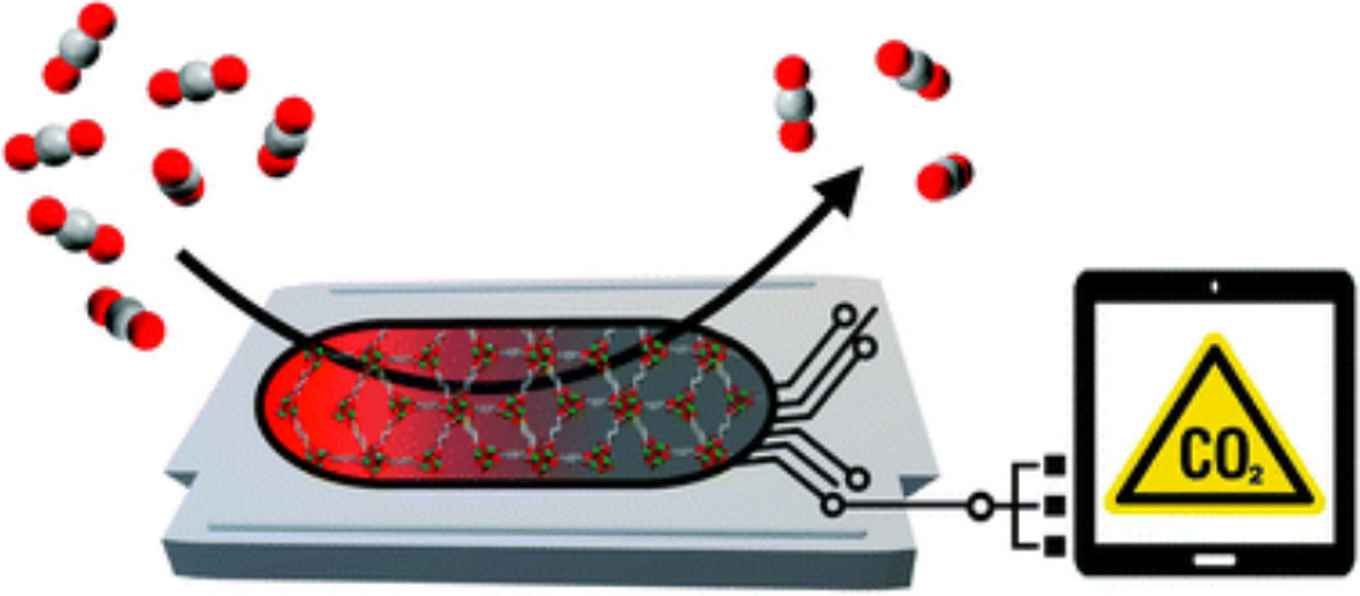Great interest in review on CO2 sensing with metal-organic frameworks
8 March 2022

The review was written at the invitation of the journal's editors as a contribution to a special issue in honour of Prof. Kees Hummelen of the University of Groningen, on the occasion of his retirement.
Abstract
Monitoring CO2 levels in the atmosphere as well as in workplace environments is strictly regulated. Commercial sensors based on polymeric materials have a low operating temperature, yet exhibit low selectivity. Molecular systems such as metal–organic frameworks (MOFs) are promising materials that can be used for CO2 sensing applications. They are formed through strong interactions between metal ions or clusters with easy-to-modify organic linkers and have exceptionally high surface areas and well-defined accessible pores. The host–guest interactions in MOFs and their responsiveness to physical and chemical stimuli can be exploited to address the critical issues in chemical sensing applications, such as fast response, sensitivity and specificity. This review provides an overview of the techniques that can be used to detect CO2 through the use of MOFs, highlighting the most promising MOF materials that exhibit CO2 sensing properties. The potential of MOFs in the development of CO2 sensors is also discussed.
Paper details
Andreea Gheorghe, Olivier Lugier, Bohui Yea and Stefania Tanase: Metal-organic framework based systems for CO2 sensing. J. Mater. Chem. C, 2021, 9, 16132 DOI: 10.1039/D1TC02249K
Links
- Journal of Materials Chemistry C most popular articles in 2021
- Journal of Materials Chemistry C hot papers in 2021
- Research Group Functional Materials
- Research priority area Sustainable Chemistry